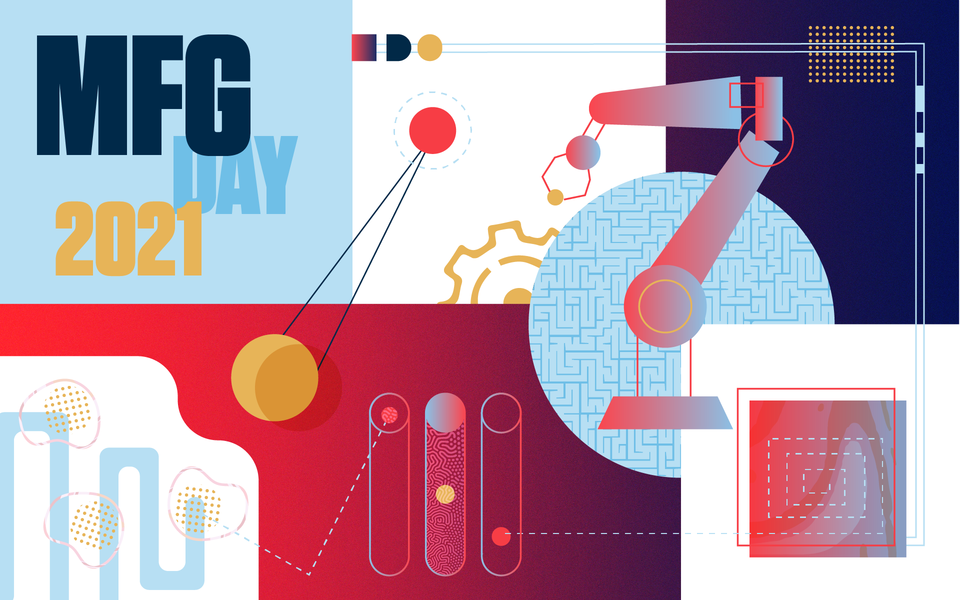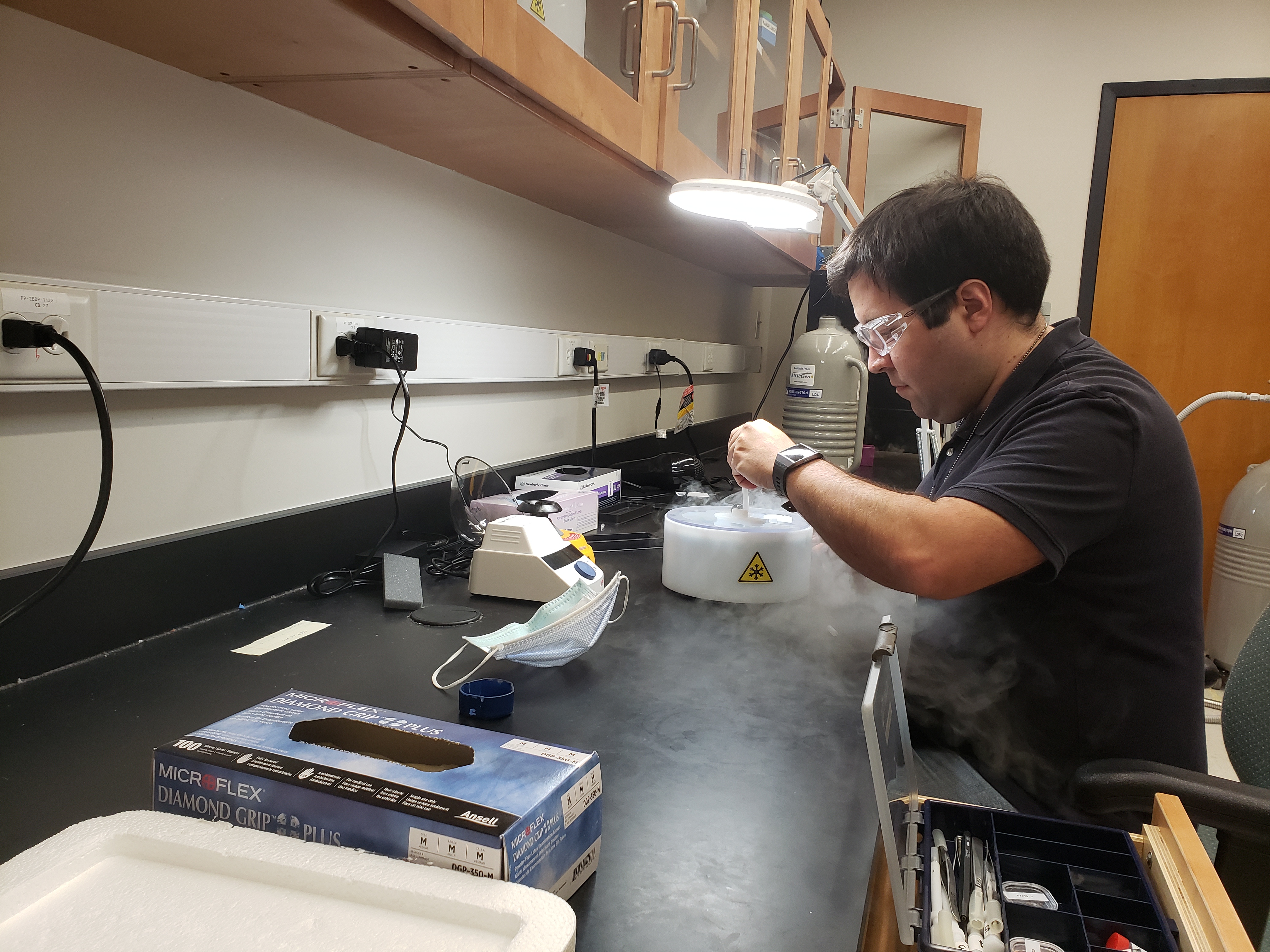Taking Measure
Just a Standard Blog
Robotic Motion and Drug-Carrying Nanoparticles: A Look at Two Paths Through the Diverse World of Manufacturing Research

Manufacturing is a colossal industry and key pillar of the U.S. economy. It takes millions of workers to keep this juggernaut moving forward every day. Engineers, technicians and machine operators on the factory floor may come to mind, but researchers are part of this group as well. At the National Institute of Standards and Technology (NIST), studies are conducted across a broad array of fields to make for smarter manufacturing processes. This Manufacturing Day, we’re underscoring the diversity of NIST manufacturing research by showcasing Tom Cleveland’s work in structural biology and Guixiu ‘Helen’ Qiao’s efforts in robotics.
Tracking Robots in Motion With Helen Qiao
In manufacturing, consistency and repetition are the names of the game. It’s a game for which robots are particularly well-suited, thanks to their ability to execute tasks over and over. In recent years, the industrial applications of robots have expanded greatly. They are used in factories for machining, assembly, inspection and other tasks, but a high degree of accuracy in robot motion is required for the best outcomes.
Early in her education, NIST mechanical engineer Helen Qiao became fascinated by the accuracy of robots but learned they are far from infallible. Robots, like other technologies, wear down over time and can develop flaws in their control systems. Issues can cause their performance to slip, and without accuracy, robots are not far from being highly sophisticated toys.
Minor errors in performance, such as a slightly misaligned robot arm, may not be apparent to the human eye but could have detrimental consequences for manufactured parts or products. Helen became well acquainted with this issue during a more-than-10-year detour from NIST research into the precision measurement industry where she worked on laser-based tracking methods designed to determine if machining tools were moving as intended.
With an abundance of practical industry experience under her belt, Helen returned to NIST eager to provide a lower-cost and easier-to-deploy solution for assessing robot accuracy. What many tracking systems actually track, rather than robots themselves, are stationary targets (such as reflective balls) fixed to robots. But these systems run into trouble with robots in motion, which can end up in a pose that blocks the view of the target.
Helen’s answer to the problem was a new system featuring a freshly patented smart target that constantly rotates towards the vision system so that it is always visible while the robot twists and turns. Illuminated areas of interest on the target, in the shape of a cross and two rods, help the system determine where the target is located in 3D space and its angular position.
The rich positional information gained from this device could help manufacturers not only with assessing the accuracy of robots, but also for calibrating and inspecting products in real time. And the list of applications may only continue to expand as Helen continues to explore new applications for her technology.
Imaging Biomolecules With Tom Cleveland
NIST physicist Tom Cleveland’s winding path to the world of manufacturing started with studying termites, of all things. Spending summers collecting data on the insect for USDA high-school program kindled Tom’s interest in the science of life at the smallest scales.
While studying biophysics in college, Tom became fascinated with how biological parts come together. He deepened that passion during a pit stop at NIST’s Summer Undergraduate Research Fellowship, where he studied the structure of grains from diseased plants.
Assessing the size, shape and structure of living things and their components — objects as large as broken bones to as small as malformed cell proteins — often helps physicians diagnose medical conditions and researchers better understand diseases. Tom would go on to find out that similar evaluations are also paramount in biomanufacturing, the mass production of biological molecules.
After earning his Ph.D. at Johns Hopkins, Tom brought his expertise back to NIST, where he has tackled an array of questions in structural biology. His latest investigation centers on tiny oily shells known as lipid nanoparticles, which are good at packaging and delivering biomolecules to cells. In some widely available COVID vaccines, particles like these carry precious RNA cargo, genetic material that allows cells to construct small pieces of viruses and build up immunity.
Mass-producing lipid nanoparticles for applications like vaccines can create slight variations in features of the particles, such as their size and how much therapeutic payload they contain. Tom’s goal is to find out which features matter most and how much these differences affect the nanoparticles’ ability to do their jobs.
Tom tackles these questions by imaging these tiny objects. But getting a close look at the nanoparticles, which are hundreds of thousands of times smaller than a termite, is no easy task.
With a powerful imaging technique called cryogenic electron microscopy, researchers can rapidly freeze a sample without changing its structure and then use a beam of electrons to illuminate it. This technique, also called cryo-EM, can unveil incredibly intricate details, allowing Tom to clearly see and evaluate the lipid shells and their RNA payload at a crisp 120,000 times magnification.
What the research unveils could help biomanufacturers fine-tune their production processes, strengthening essential therapeutic drugs for society.

More Manufacturing Day: NIIMBL and NJMEP
Need more Manufacturing Day? Check out these videos about how NIST-sponsored programs ManufacturingUSA and the Manufacturing Extension Partnership (MEP) are helping to make a difference in the world of manufacturing.





